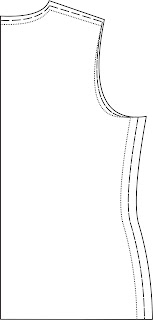I worked off and on at my LYS until a few years ago when the owner retired and was unable to sell the business. I was there part time, between corporate jobs, both teaching and working the floor of the shop.
Retail store owners use classes to bring customers into the shop and as an added value to their customer base. They hope that students will buy more product once they are in the shop for a class. Instructors are paid better than the hourly rate of retail staff but at the very low end of the scale for anyone who is an educator in any industry. The time it takes to develop course materials is not taken into account. You are typically paid an hourly rate for the class time which is predefined but in reality often runs over as you are in the shop, so it is not unusual for students to pop back in for one on one questions and assistance. I always happily worked with these students as I'm passionate about my knitting as are all of us who pursue this as a career.
Retail store owners use classes to bring customers into the shop and as an added value to their customer base. They hope that students will buy more product once they are in the shop for a class. Instructors are paid better than the hourly rate of retail staff but at the very low end of the scale for anyone who is an educator in any industry. The time it takes to develop course materials is not taken into account. You are typically paid an hourly rate for the class time which is predefined but in reality often runs over as you are in the shop, so it is not unusual for students to pop back in for one on one questions and assistance. I always happily worked with these students as I'm passionate about my knitting as are all of us who pursue this as a career.
Sometimes on busy shop days we would have to ask students, (outside of class time) to wait while we looked after other customers in the store. Most were happy to do so but occasionally there were students who were not pleased by this. One of my co-workers who did not teach, also pointed out to me that attending guild meetings was becoming a problem for her because so many customers would approach her about shop business during what was a social evening out for her.
The owner of the shop calculated costs very carefully for classes. They had to break even on the cost of paying the instructor with the amount charged to the students. So that number was the break point for canceling a low enrollment class. I'm not making a value judgment on anything I've written about today, this is just the way it is. These are the realities of the economics of knitting. I suspect that most consumers are unaware of how this all works so I'll continue to share more information in future posts.




























